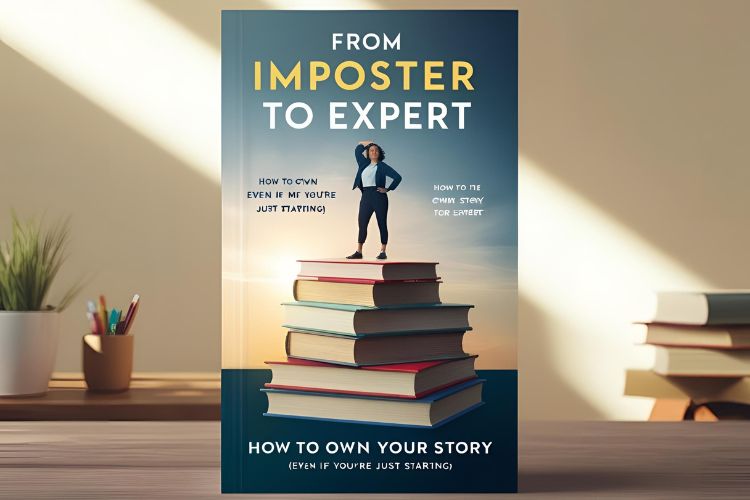Why You Don’t Need a 50-Page Marketing Plan
Let’s be real: most small business owners don’t have the time — or the need — to create a 50-page marketing document. You’re not pitching to investors or managing a multi-departmental marketing team. You just want more people to know about your business and buy what you offer.
And for that, a one-page marketing plan is more than enough.
It strips away the fluff and forces you to focus on what actually matters:
- What are you trying to achieve?
- Who are you talking to?
- How will you reach them?
- What will you say?
- And how will you know if it’s working?
A simple, focused plan keeps your strategy clear, your actions intentional, and your energy going in the right direction.
It’s especially effective if you’re a solopreneur, freelancer, or local business owner — because it works with your reality, not against it.
You don’t need to overthink it. You just need to get started — and a one-page plan helps you do exactly that.
What a One-Page Marketing Plan Should Include
A one-page marketing plan isn’t about cutting corners — it’s about cutting through the noise.
It gives you a clear view of your business, your audience, and your strategy in one simple layout. No filler. No endless slides. Just the essentials that drive action.
Here are the 8 core components your one-page marketing plan should include:
Your Business Goal
What are you trying to achieve in the next 3–6 months? (e.g., more clients, higher revenue, increased visibility)
Your Target Audience
Who exactly are you trying to reach? Get specific — the more focused, the better.
Your Unique Selling Proposition (USP)
What makes you different from everyone else in your space? Why should people choose you?
Key Marketing Channels
Where will you show up? Pick 2–3 platforms or channels your audience actually uses.
Your Core Message
What’s the main message you want to communicate? What should your audience remember about you?
Content/Promotion Plan
How will you engage your audience? Think content themes, posting frequency, and simple campaign ideas.
Budget & Time Commitment
How much can you invest — both in terms of money and time — each week or month?
Success Metrics
How will you measure progress? Choose 2–3 meaningful KPIs (like leads, engagement, or revenue).
Each of these elements will form a section in your one-pager — and together, they’ll help you stay focused, consistent, and confident in your marketing efforts.
How to Fill It Out: Step-by-Step Breakdown
You don’t need a marketing degree to create a smart, strategic plan — just a bit of clarity and a willingness to take action. Let’s break down each part of your one-page marketing plan:
Step 1: Define Your Main Business Goal
Start with the big picture. What do you want to accomplish in the next 3 to 6 months?
Examples:
- “Sign 10 new clients”
- “Increase monthly revenue by ₹50,000”
- “Get 500 new Instagram followers and convert 10% to leads”
Make it specific, realistic, and measurable. One goal is enough to start with.
Step 2: Identify Your Target Audience
Who are you talking to? Don’t say “everyone” — get as specific as possible.
Ask yourself:
- Who benefits most from my product or service?
- What are their pain points?
- Where do they spend time online?
- What words do they use when describing their problem?
The clearer you are, the easier it is to market effectively.
Step 3: Craft Your Unique Selling Proposition (USP)
What sets you apart from competitors?
This could be:
- A specific method or approach
- A price point or experience
- Your story or background
- A unique outcome or guarantee
Write one or two lines that explain why someone should choose you.
Step 4: Choose 2–3 Marketing Channels
Instead of trying to be everywhere, pick the few platforms that matter most to your audience.
Examples:
- Instagram + WhatsApp
- Email + LinkedIn
- Local flyers + referral program
Think about where your audience already hangs out — and go there.
Step 5: Write Your Core Message
What’s the key message or promise you want to get across?
Examples:
- “We help local businesses grow through simple digital marketing.”
- “Homemade skincare that’s clean, affordable, and made with love.”
- “Fitness coaching that fits into your busy schedule.”
Keep it short, clear, and authentic.
Step 6: Build a Simple Promotion Plan
Don’t overthink it — start with a basic weekly or monthly plan.
Example:
- Mondays: Educational tip
- Wednesdays: Customer story or review
- Fridays: Product/service promotion
Create a 4-week content calendar with repeatable themes so you’re not scrambling every day.
Step 7: Set Your Budget & Time Commitment
Decide how much you can realistically invest.
Examples:
- ₹5,000/month on Instagram ads
- 1 hour/day creating content
- ₹0 but 3 hours/week on free organic strategies
Keep it within your limits so it’s sustainable.
Step 8: Define Your Success Metrics
What does success look like? Pick 2–3 KPIs to track over time.
Examples:
- Website visits
- Leads generated
- Sales made
- Follower growth
- Email signups
Track them monthly to spot what’s working — and what’s not.
Each of these steps builds toward a plan that works with your life and your business — no overwhelm, just clear direction.
Pro Tips to Make It Work Long-Term
Creating a one-page marketing plan is just the start — the real magic happens when you stick with it and make it a living document.
Here’s how to keep it working for you over time:
Review It Monthly, Update Quarterly
Set a recurring reminder to glance at your plan once a month. Ask:
- Am I hitting my goals?
- Are my channels still working?
- Has my audience changed?
Then, every 3 months, update the full plan if needed — refine your message, test new content ideas, or swap channels based on what’s performing.
Don’t Chase Every Trend
It’s tempting to jump on the latest social media challenge or marketing hack — but not everything that’s trending is relevant to your audience or business.
Stick to what’s aligned with your goal and your audience. Build consistency first, experiment later.
Track Results and Tweak as Needed
Keep an eye on your success metrics. If something’s working — do more of it. If not, adjust.
You don’t need to overhaul everything; sometimes a small tweak in your content or timing can unlock better results.
Consistency beats complexity every time. The key is to keep things simple, stay focused, and give your strategy time to work.
Final Thoughts: Marketing Doesn’t Have to Be Complicated
If you’ve been putting off your marketing because it feels overwhelming — you’re not alone.
But here’s the truth: you don’t need a fancy agency, a huge team, or a complex strategy to grow your business.
You just need clarity, focus, and a plan you’ll actually use — and that’s exactly what a one-page marketing plan gives you.
Start small. Stay consistent. Check in with your plan, adjust when needed, and keep showing up.
Action builds momentum — and momentum leads to results.
So print out your plan. Stick it on your wall. Keep it visible. Let it guide your marketing moves, one step at a time.


